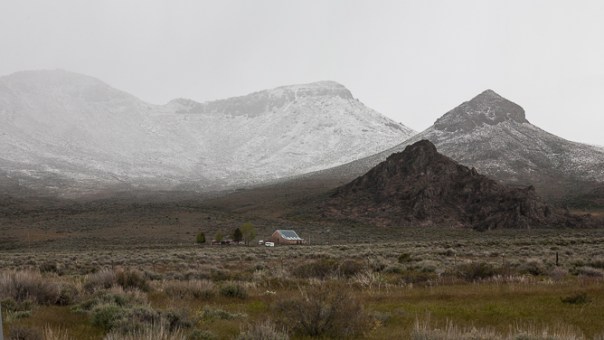 Way back in the olden days, in the film era, I was driving home – across the Dumbarton Bridge – at sunset. It was a rare, warm summer day, with no wind and no fog peaking over the hills. The light was magical and I pulled over and took a couple of pictures.
Way back in the olden days, in the film era, I was driving home – across the Dumbarton Bridge – at sunset. It was a rare, warm summer day, with no wind and no fog peaking over the hills. The light was magical and I pulled over and took a couple of pictures.
I have dozens of Carousels of slides and even more binders filled with slides (maybe more binders than Romney). Right now, they are hidden in their Kodak boxes, doing nothing to enrich my life. I have not looked at them or shown a slide show in over ten years. To make room, and in an effort to actually make the slides accessible, I am slowly going through them, throwing alot away and converting some to digital. At Kirk Moore’s recommendation, I am using the ScanCafe and they are doing a super job.
One Carousel is a group of pictures from Japan in the 60’s and another, a trip down Coyote Gulch, that Michele and I first took in the early 90’s. There were also a couple of odds and ends that I tossed in the scan pile. One of them was the picture above.
Another sunset was from Russian Ridge. I have been to Russian Ridge – probably – fifty times. Michele and I watched the Transit of Venus from there, I have watched the fog come in from there, and I have watched dozens of sunsets. None were even close to being as spectacular as this one from the film era when everything turned orange.
A third sunset, this time in Arizona during a silence and fasting period of a week long spiritual retreat. It was a crummy, overcast, day that turned magic as the sun dropped below the cloud layer.
Driving back from the same retreat, I drove by what seemed like miles of yellow flowers. Lisl Dennis talks about inertia in photography – not photography? – and I remember driving along and thinking This is gorgeous; I should stop and take a picture. and continuing to drive. It is always a conflict, while driving someplace, between trying to actually get there and stopping to take a couple of pictures, and then a couple more pictures, especially if it requires any setup. This didn’t, the clouds, the flowers, the junipers, were just there, mile after mile.
Before he had a studio in The Smoke Creek Desert, Mike Moore had a place on/in an old Air Force Radar Station south of Winnemucca, Nevada. It was a concrete block building, on top of a mountain, and he called it Radar Ranch. Walking up from the building to a view point, we could see all the way to the edge of the earth in three out of the four directions. I think this was the view south.
After a very crowded day at Machu Picchu, the tourist train left, leaving just three of us in the empty ruin. We were all photographers – a good friend with whom I often traveled, a photographer from Brooklyn, and myself – and we were all chewing coco leaves. I ended up shooting three roles of film of – basically – stone walls. Surprisingly, I liked them all. This stray shot showed up and, somewhere in a binder, there are another hundred shots just like this as well as more conventional shots.
Of course, there are lots of odds and ends from various trips to Death Valley. I am almost positive that I didn’t take either of the next two shots. The first, a wedding picture of Michele and me. I have no idea where or how I got this wedding picture, we were married the afternoon before and the Wedding Photographer suggested that we get a picture the next morning from Zabriskie Point. What I had forgotten and the photographer never knew, because he had never been to Death Valley before, was that sunrise at Zabriskie is probably, photographically, the most popular sunrise place in California (atleast, that doesn’t involve water). There were dozens of photographers and Michele and me, all dressed up. Our wedding album has lots of pictures that are better than this but, still, this does have an enigmatic charm.
Michele pointed out that the final shot, below, is close to the odds end of the odds and ends scale. I know that both our names are Steve and I am pretty sure that it was taken in greater Death Valley in the 60’s. Other than that, I have no idea what the story is, what we were doing, or what I was – apparently – trying to explain with my arms.













